- Home
- About Us
- TSPT Academy
- Online Courses
-
Resources
- Newsletter
- Business Minded Sports Physio Podcast
- Day in the Life of a Sports PT
- Residency Corner
-
Special Tests
>
-
Cervical Spine
>
- Alar Ligament Test
- Bakody's Sign
- Cervical Distraction Test
- Cervical Rotation Lateral Flexion Test
- Craniocervical Flexion Test (CCFT)
- Deep Neck Flexor Endurance Test
- Posterior-Anterior Segmental Mobility
- Segmental Mobility
- Sharp-Purser Test
- Spurling's Maneuver
- Transverse Ligament Test
- ULNT - Median
- ULNT - Radial
- ULNT - Ulnar
- Vertebral Artery Test
- Thoracic Spine >
-
Lumbar Spine/Sacroiliac Joint
>
- Active Sit-Up Test
- Alternate Gillet Test
- Crossed Straight Leg Raise Test
- Extensor Endurance Test
- FABER Test
- Fortin's Sign
- Gaenslen Test
- Gillet Test
- Gower's Sign
- Lumbar Quadrant Test
- POSH Test
- Posteroanterior Mobility
- Prone Knee Bend Test
- Prone Instability Test
- Resisted Abduction Test
- Sacral Clearing Test
- Seated Forward Flexion Test
- SIJ Compression/Distraction Test
- Slump Test
- Sphinx Test
- Spine Rotators & Multifidus Test
- Squish Test
- Standing Forward Flexion Test
- Straight Leg Raise Test
- Supine to Long Sit Test
-
Shoulder
>
- Active Compression Test
- Anterior Apprehension
- Biceps Load Test II
- Drop Arm Sign
- External Rotation Lag Sign
- Hawkins-Kennedy Impingement Sign
- Horizontal Adduction Test
- Internal Rotation Lag Sign
- Jobe Test
- Ludington's Test
- Neer Test
- Painful Arc Sign
- Pronated Load Test
- Resisted Supination External Rotation Test
- Speed's Test
- Posterior Apprehension
- Sulcus Sign
- Thoracic Outlet Tests >
- Yergason's Test
- Elbow >
- Wrist/Hand >
- Hip >
- Knee >
- Foot/Ankle >
-
Cervical Spine
>
- I want Financial Freedom
- I want Professional Growth
- I want Clinical Mastery
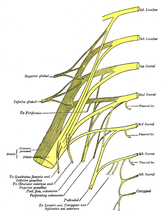 Credit goes to Julie Wiebe for posting this interesting abstract. Overactive Bladder Syndrome (OAB) is a disorder of urgency, frequency, nocturia, and possibly incontinence. This post stood out to us, because the study demonstrated the potential for treating OAB by stimulating the posterior tibial nerve. By inhibiting somatic lumbar and sacral nerve fibers, the detrusor muscle is inhibited without any alteration in the micturition reflex. The study found both ES to the pelvic floor and PTNS to be effective in modulating the effects of OAB; however, ES was found to be superior overall. Yet, it is still interesting to see the effects we can have on the renal system by working peripherally with e-stim. This is something we should consider when treating our patients, for both the potential positive and negative side effects.
3 Comments
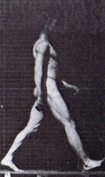 In the clinic, we often only have the length of the gym to analyze a patient's gait pattern. They patient may walk back and forth 2-3 times, giving you a total of 30 seconds to 1 minute to fully assess their pattern and recognize any deviations. In this post from the Physioblogger, he discusses his Quick Gait Assessment. His assessment includes looking at the feet, hips, and trunk. He starts at the feet and works cephalad. Beginning at the feet, he assesses heel to toe progression and the amount of pronation/supination. Next at the hips, he analyzes frontal plane motion and the amount of pelvic sway. Finally in the thoracic region, quick notes are made on the amount of arm swing and trunk stiffness. Important points: -No diagnosis is made during the gait assessment. Formulating hypotheses as to why a deviation is present is fine, but do not make definitive judgements as to why deviations are occurring. It is simply an observation. -Always remember a patient's injury, mechanism, lifestyle. What structures are involved? How can this injury/ their lifestyle impact the gait cycle? -If possible, videotape your patients! Watch their gait patterns after they are gone. Take a few notes, perform the appropriate tests and measure, and act accordingly! Everyone has a different system they use for their quick gait assessment. Having a consistent method and practicing that method is important to your success as a therapist. Remember, we are movement analysis specialists. 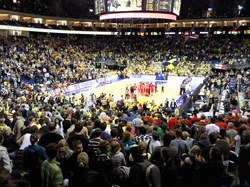 Following reconstruction of the ACL, there is a level of fear associated with re-injury. Not only does this anxiety increase injury risk, but it also lowers the level of performance. The Chicago Bulls' Derrick Rose has been under criticism, regarding this issue. In April 2012, Rose tore his ACL and went on to have surgery about a month later. Around March of 2013, his surgeon said he was medically cleared to play. Rose then went back and forth about being ready to play until the playoffs were over. His reason for hesitancy was lack of confidence in his surgical leg. Physiospot did a review of some research on this topic. It was found that only 31% of athletes return to pre-injury level of play at 12 months. An association was found between pre-surgery/early rehab psychological response and return to pre-injury levels at 12 months. We should take two things away from this: at this point, it is the exception, not the rule, that athletes return at pre-injury levels at 12 months or fewer, and we should be assessing the psychological component in rehab more often. Another item to point out, is the fact that we, as a health care system, are lacking any truly valid return to play criteria for ACL reconstruction. Many surgeons/physical therapists use things like isokinetic strength testing compared to the uninvolved limb, but as you can see by the 31% level of return, there is a discrepancy between isokinetic strength and actual competitive play. 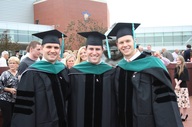 Knowing what path to take following graduation can be very difficult. If you are like us, you have many unanswered questions: What continuing education courses should I take? How can I maximize my success with patients? What common professional mistakes can I avoid making and how? We recently reached out to some of the top professionals to find out what steps they took to become successful. The answers below are brought to you by Dr. E (The Manual Therapist). 1. What advice do you have for physical therapists in their first years of professional practice? My advice is to get a system of assessment and treatment. Most schools still teach the tired and not so true history, AROM, PROM, palpation, special tests up the wazoo, come up with a diagnosis, and now what? I know we have to learn basics in school, but this ends up leaving most novice clinicians with too much info! Any clinician needs a system of assessment which leads to treatment. Classification has been shown in the research to improve outcomes versus treatment of patho-anatomical models. This leads me to my next answer! 2. What is one continuing education course you would recommend every physical therapist attend? Please provide a brief explanation. Years ago, I would have told any new grad to take a series of manual therapy courses like Paris, Maitland, Grimsby, NAOIMPT, etc... While these courses will enhance your clinical decision making eventually, you will be overwhelmed with options. Your first day back with live patients, you will be left with dozens of ways to passively assess movement and often hundreds of new treatment techniques. Is complex better? Often not... it's also less reliable. That is why I tell all my students to take McKenzie Courses A-D. Certification is not necessary, but helps solidify your knowledge by getting you to really study the system and then have your knowledge practically and didactically tested. It's one of the most proven methods of assessment for reliability, and has been shown to have superior long term outcomes versus traditional OMPT in the lumbar spine. 3. What are some important components a new graduate should look for in their search for a first job? If possible, you should look for freedom to assess and treat, plus quality time with your patients. I realize beggars cannot be choosers and I worked two jobs for the first two years of my career seeing 4-6 patients an hour and having 30 minutes for evals. Do not be discouraged or complacent. I have seen too many students settle on clinics that see way too many people and cannot possibly provide quality care. The clinics that do provide 1:1 are out there, and sometimes you have to form your own. I did not think that was possible 7-8 years ago, but decided to take a risk 10 years in and finally have a practice of my own. Your future employer should be open to how you want to evaluate and treat, not dictate pathways per diagnosis. A recent fellow mentee finished his hours, graduated from the program only to be employed by someone who wanted everyone to get a "fru-fru" type of massage and have the patients dictate the Tx a la carte, not the clinician. She took also took away IASTM and spinal manipulation even though on the interview, she said these treatments would be fine. Lastly, you want to have an employer that pays for a decent amount of con-ed. One to two courses per year are enough to keep up with your learning. 4. What is one thing you would have done differently early in your career? And why? I wish I would've learned to be lighter with my hands a long time ago. Telling patients to suck it up, and I have to plastically deform their fascia and joint capsules left a lot of people sore and occasionally bruised. That's not cool. If going lighter and lighter all the time with my forces and getting patients better faster is not an indication that interaction, education, and then manual therapy are the way to go, I don't know what is! 5. Any other words of advice for the new graduate? Yes, you're always a student! Keep up with the learning, the more you learn the less you know and that is how it should be! As a know it all, I thought after taking Paris' courses that I was a bullet proof clinician. Yet, somehow 12 years ago, it was taking me 15-20 visits to make patients better. There are so many resources available to you online from twitter to facebook and of course blogs! You are practicing in a very exciting time! I find myself changing assessment, treatment, educational and interaction models with patients every 2 years or so. If you haven't had a paradigm shift in 2-3 years, you're not learning enough! One last piece of advice. I thrive as a mentor. Feel free to post in the forum or contact me via the link in the sidebar. I try to get back to everyone within one business day! Good luck out there! 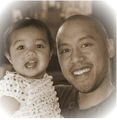 About Dr. E: Dr. Erson Religioso III, DPT, MS, MTC, CertMDT, CFC, CSCS, FMS, FMT, FAAOMPT, graduated from D'Youville College in 1998 with a dual Bachelor's of Science and Master's of Science in Physical Therapy. His interests in Orthopaedics and Manual Therapy lead him to pursue a Doctor of Physical Therapy degree from the University of St. Augustine. Studying under StanleyParis, Ph.D, PT, internationally known for his manual skills and knowledge of the spine as well as his distinguished faculty, Dr.Religioso earned his DPT and Manual Therapy Certification in 2000. He later became credentialed in Mechanical Diagnosis and Treatment of the Spine in 2000, and in 2008 became one of four mentors in the country who can train orthopaedic manual therapy to MDT Diplomats, of which there are only several hundred in the world. Thanks to extensive training and certification from Dr. Mariano Rocabado, PT, of Chile, one of the world’s foremost experts in treatment of temporomandibular joint dysfunction, Dr. Religioso became certified in evaluation and treatment of oromaxillary, craniofacial, and temporomandibular pain in 2005. Later in 2005, he obtained Fellow status in the American Academy of Orthopaedic Manual Physical Therapists and serves as a mentor for future Fellows through Daemen College’s Fellowship in OMPT program. He recently became certified in FMS level 1 in December 2011 and expects certification in level 1 of the Selective Functional Movement Assessment soon. In January 2013, Dr. Religioso became an official FMT level 2 certified Rock Doc, a start of the art method of kinesiotaping. In mid to late 2013, Dr. Religioso is pursuing courses leading to the completion of the Postural Restoration Institute's PRC Certification. Dr. Religioso is adjunct faculty of D’Youville College, Daemen College, and SUNY at Buffalo, where he teaches orthopaedic manual physical therapy in the DPT programs. He founded themanualtherapist.com to help mentor and teach professionals around the world and physioanswers.com to help educate consumers and the general public on the profession of physical/physiotherapy. He also is the creator of the EDGE Tool, a high quality stainless steel tool for assisted soft tissue manipulation, the EDGEility Tool, a lower cost, high quality plastic tool for IASTM, the CupEDGE, silicone cups for cupping massage and assisted tissue manipulation, the EDGE Mobility Bands, for enhancing mobility with compression wrapping and self mobilization from neck to foot, and the Stop Thought Viruses Challenge, for individuals in chronic/persistent pain states. He also is an importer of high quality Mirror Boxes for pain, arthritis, stroke rehab, and neuroorthopaedic problems. In 2013, courses in the continental US, Canada, and Chile will be available on the Eclectic Approach to TMD and Facial Pain, Neurodynamics, Soft Tissue Manipulation feat. the EDGE, Spinal Thrust Manipulation, and Assessment and Treatment of the Upper and Lower Quarter (2 separate courses). 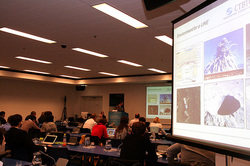 As some of you may have noticed, we have a strong interest in evidence-based practice. In fact, one of the missions of this website is to increase awareness of the latest literature. However, to what point should we rely on evidence? Having read more than a few studies that showed little support for modalities in general (Yes, there are some pathologies that respond extremely well), you can imagine we would be hesitant to administer things like ultrasound, hot packs, etc. in the clinic. Coming across patients who request these modalities during treatment can be frustrating as we know they often have little effect physiologically. We have all had the experience of a patient saying, "last time I had therapy, the TENS Machine was really what got me through the day." On one hand you know you do not want to spend valuable treatment time performing these interventions, but on the other you feel it may benefit the patient psychologically. So, where do we go from here? Having recently listened to David Butler's and others' audio recordings from IFOMPT, the importance of the biopsychosocial role really stood out to us. We cannot underestimate the impact of the mind. The neuroplastic changes associated with chronic pain often are as big a part of a patient's complaints as a mechanical component. Patients have been suffering with pain or have had dysfunctional movement for so long that the nervous system has adapted to the new "norm," and it is the true normal movement that feels abnormal. Butler, in fact, states that the biggest predictor of low back pain is depression and that we must explain to patients that the source of there pain is not necessarily mechanical (if a patient is grouped here). So how does this tie in with evidence-based practice? Knowing how the nervous system can affect the patient's perception of pain, there may indeed be a role for interventions with low evidence, such as certain modalities, if a patient believes the treatment will help them return to function. We are not saying that these interventions should consume a significant portion of our treatment time (or that we should go to them at all), but it is something to consider for a trial to calm the patient's fears and give us time for them to "buy into" our methodology, especially if they made a request for that treatment. That being said, we cannot stress enough the importance of educating our patients. Perhaps spend some time explaining to the patient how physiologically, there is little evidence of changes occurring at the cellular level with that specific intervention and then continue to educate the patient on what the literature shows as having the best outcomes. Obviously, education on proper movement patterns and posture must be included as well. You might be surprised at how literal some of our comments are taken. Consider the idea that you teach your patient to lift with a slight lordotic posture, so as to minimalize the stress on the back. Some patients might incorporate this posture into all aspects of their life, thinking that they should never bend their back if they want to avoid pain. Think of all the compensations that might result! We must evaluate all faulty movement patterns a patient presents with and educate them clearly on better strategies. Of course, we should still utilize our clusters, clinical prediction rules, and clinical practice guidelines when treating patients, but we must be aware that not everyone falls into those groupings. Some people have a larger biopsychosocial role than others, and it is these patients that we must spend even more time on education. Yes, maybe we should consider the use of interventions with lower quality evidence early in our treatment plans, but in it, we must include education and interventions with higher quality evidence as well so that we can move toward the desired outcomes. 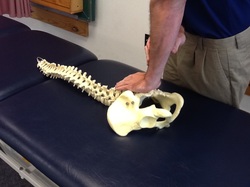 We recently came across this manual therapy resource from OPTIMPT. They have hundreds of manual therapy videos with explanation on why to perform certain techniques. The techniques are performed by fellow trained manual therapists. Enjoy! OPTIMPhysTher Hey everyone! Check out this new IPAD DASH outcome app available now. It was created by Kenny Wilson, MHS, PT, SCS, ATC, CHT who taught our business classes and a section of our sports seminar class at SLU. With how important it is we continue to try and push to use more outcome tools in the clinic this is a very efficient and easy way to start implementing it, without all the paperwork. If you use the DASH check out the app, it might be a useful tool for you.
See this article on the new app... 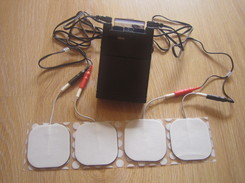 With the NPTE just a couple weeks away for some of us, we can use as many resources as we can get our hands on! Jordan from Shenandoah University developed this website with a focus on modalities. It breaks down the theory, procedure, and treatment plans for each modality. She even has worksheets included to develop your skills for each modality. There is a lot of useful information here on the subject if you take the time to explore. Thanks for the resource Jordan and good luck to everyone studying for the NPTE! 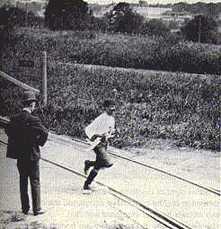 If you feel like we having been referencing The Gait Guys a lot recently... it is because we have! They have put out a few great segments recently including this 2 part series on the Power of Observation. As clinical novices, we often do not have enough opportunities to see pathological gait patterns and conditions. As former students, almost of our lab "patients" were healthy classmates. While those experiences were rewarding, they were far from a real situation. In this series, Shawn and Ivo dissect a triathlete's gait pattern. The patient presents with chronic low back pain, but has impairments throughout the entire lower chain. One interesting impairment they discuss is a "clenched fist on the L," which they attribute to flexor dominance and related to decreased arm swing and proprioceptive deficits. Their explanation: the proprioceptive system feeds the cerebellum. The cerebellum helps fire axial extensors. Because proprioception is limited in this athlete, the patient is naturally drawn into a flexor dominant position. Check out the entire post to gain more gems like this one! Because the gait guys use a Tumblr format, you may have to scroll down to June 25 and June 26. Enjoy! 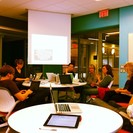 As evidence-based practice is becoming a staple in physical therapy education, it is important we properly assess each piece of research before choosing whether or not to incorporate its findings into our practice. Given the breadth of science courses that consume most of our schooling, non-clinical classes like evidence-based practice often get set aside as less important. Unfortunately, we often fail to realize the significance of search strategies, article assessments, and more when we are in the didactic portion of school. Instead, this material should really be one of the largest emphases in our programs, due to the need to stay up to date with best practice methods. With the NPTE and clinical work coming up soon, we thought it would be a great time to review some of the core components of EBP. This review is by no means exhaustive, but instead is intended to give you a foundation for further review. CONTINUE READING.... |
Dr. Brian Schwabe's NEW Book in partner with PaleoHacks!
Learn residency-level content on our
Insider Access pages We value quality PT education & CEU's. Click the MedBridge logo below for TSPT savings!Archives
July 2019
Categories
All
|






 RSS Feed
RSS Feed